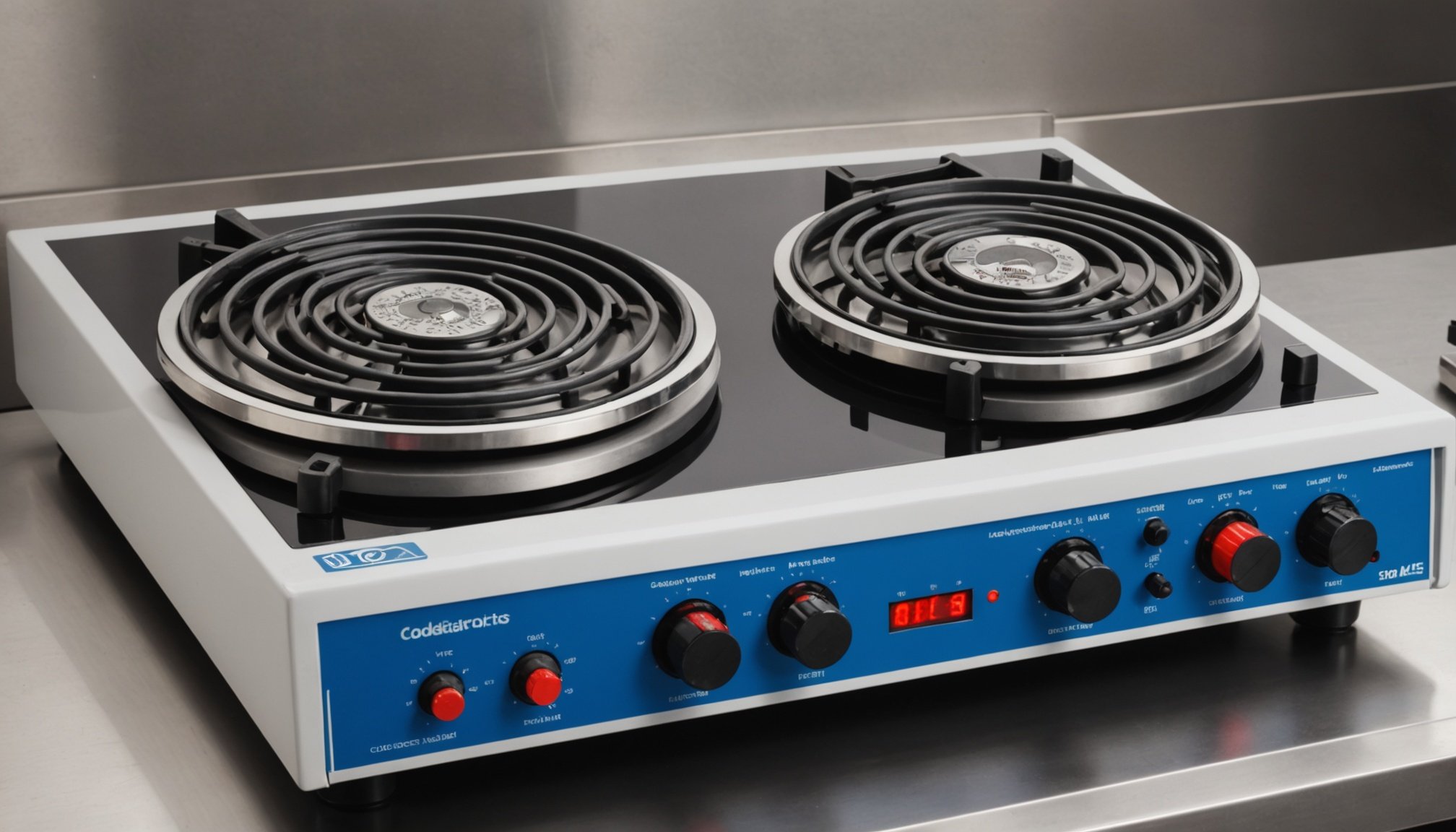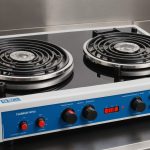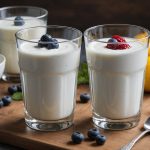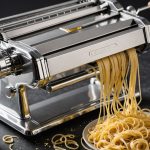Selecting a hot plate with superior heat distribution can significantly enhance your cooking experience. Uneven heating often leads to frustration and unsatisfactory results. Factors like material, design, and technology play a pivotal role in achieving optimal performance. Understanding these considerations empowers you to make informed decisions. This guide will highlight essential elements to look for, ensuring your culinary endeavors are met with success and precision.
Importance of Heat Distribution in Hot Plates
Understanding heat distribution is essential for effective cooking. It refers to how evenly heat is spread across a hot plate, impacting the cooking process significantly. A well-distributed heat ensures that food is cooked uniformly, enhancing both texture and flavor. Conversely, poor heat distribution can lead to uneven cooking, where some parts of the dish might be overcooked while others remain raw. This inconsistency can be frustrating for cooks seeking perfection in their culinary endeavors.
Also read : Essential Features to Consider When Choosing a Pasta Maker for Perfect Homemade Noodles
Different hot plate models exhibit varying levels of heat distribution. Factors such as the material of the hot plate, its design, and the technology used can influence how heat is spread. For instance, cast iron hot plates are known for their excellent heat retention and even distribution, while some cheaper models may not distribute heat as effectively.
Key Factors Influencing Heat Distribution
- Material: Cast iron, stainless steel, and ceramic have different heat properties.
- Design: The shape and thickness of the hot plate can affect heat flow.
- Technology: Advanced models use induction or infrared for better distribution.
In conclusion, assessing heat distribution is crucial when choosing a hot plate. It directly affects cooking results and efficiency, making it a key consideration for anyone looking to enhance their kitchen experience.
In the same genre : Key Features to Look for in a Yogurt Maker for Perfect Home-Made Yogurt
Key Factors to Consider When Choosing a Hot Plate
Choosing a hot plate involves evaluating several crucial features to ensure it meets your cooking needs. Carefully considering these factors can lead to a more satisfying culinary experience.
Material selection plays a pivotal role in heat retention and distribution. Opt for materials like cast iron or stainless steel, which are renowned for their ability to distribute heat evenly. This choice will directly impact the efficiency and consistency of your cooking.
Size and portability are also significant considerations when choosing a hot plate. Smaller models are ideal for limited spaces or travel, while larger ones offer more cooking surface for bigger meals. Assess your space and cooking requirements to decide the best fit.
Essential Features to Evaluate
- Material: Choose for optimal heat properties.
- Size: Match to your cooking needs and kitchen space.
- Portability: Consider for ease of transport and storage.
A well-thought-out choice can transform your cooking experience, making it more efficient and enjoyable. By focusing on these key factors, you can ensure that your new hot plate will serve you well, whether you're a home cook or a culinary enthusiast.
Materials and Their Impact on Heat Distribution
Exploring the nuances of hot plate materials reveals their profound influence on heat conduction and cooking performance. Each material offers unique characteristics that affect how heat is distributed across the cooking surface.
Aluminum is a popular choice due to its excellent heat conduction properties. It heats up quickly and evenly, making it ideal for fast cooking. However, it may not retain heat as well as other materials, which can be a disadvantage for dishes requiring consistent temperatures.
Stainless steel, known for its durability, offers moderate heat conduction. While it may not heat as uniformly as aluminum, its robustness and resistance to corrosion make it a favored option for long-term use.
Ceramic hot plates provide a non-stick surface and distribute heat evenly, though they tend to heat up more slowly. They are ideal for dishes that require gentle cooking but may be prone to cracking under sudden temperature changes.
Advantages and Disadvantages
- Aluminum: Quick heating, but less heat retention
- Stainless Steel: Durable, moderate heat distribution
- Ceramic: Even heating, slower to warm up
Selecting the right hot plate materials involves balancing these factors to enhance your culinary experience.
## Design Features That Enhance Heat Distribution
Understanding the **design features** of a hot plate is crucial for maximizing **heat efficiency**. These elements significantly impact cooking performance and user experience.
### Coil Placement and Surface Area
The placement of heating coils plays a pivotal role in **heat distribution**. Strategically positioned coils ensure even **heat transfer** across the cooking surface, preventing hotspots. Additionally, the **surface area** and shape of the hot plate can enhance **heat efficiency**. Larger surfaces allow for more uniform cooking, while specific shapes can direct heat more effectively.
### Impact on User Experience
Design not only affects cooking results but also user convenience. A well-designed hot plate can simplify cooking tasks, making it easier and more enjoyable to prepare meals. Consider these design elements when selecting a hot plate for optimal **heat efficiency**:
- **Coil Placement**: Ensures even heat distribution
- **Surface Area**: Larger areas improve heat transfer
- **Shape**: Influences the direction and spread of heat
By focusing on these **design features**, users can achieve better cooking outcomes and a more satisfying culinary experience. The thoughtful integration of these elements is essential for anyone seeking to optimize their kitchen tools for maximum **heat efficiency**.
Understanding Wattage and Its Effects
Exploring the role of wattage in hot plates for optimal cooking performance.
Wattage and Heat Output
Wattage is a critical factor in determining the heat output of a hot plate. Higher wattage generally means more power, leading to quicker heating and higher temperatures. This is crucial for recipes requiring rapid temperature changes or high heat. Conversely, lower wattage models may offer slower heating, which is beneficial for gentle cooking techniques.
Cooking Times and Temperature Control
The wattage of a hot plate directly influences cooking times and temperature control. A higher wattage allows for faster cooking, reducing wait times and enhancing efficiency. However, it can also make precise temperature control challenging. Lower wattage provides more consistent heat, ideal for recipes needing slow, even cooking.
Recommendations for Wattage
Choosing the right wattage depends on your cooking style and recipe needs:
- High Wattage (1500W+): Best for quick searing and boiling.
- Medium Wattage (1000-1500W): Suitable for everyday cooking.
- Low Wattage (Below 1000W): Ideal for slow cooking and simmering.
Selecting the appropriate wattage ensures energy efficiency and optimal cooking performance, catering to diverse culinary preferences.
Heat Settings and Their Importance
Understanding the role of heat settings in hot plates is essential for achieving optimal cooking results. These settings allow for precise temperature control, accommodating various cooking techniques and recipes.
Overview of Common Heat Settings
Hot plates typically offer a range of heat settings to suit different culinary needs. These can range from low, medium, to high, and sometimes include specific temperature increments. Adjustable heat settings enable cooks to tailor the temperature control to their specific requirements.
Importance of Adjustable Heat Settings
The ability to adjust heat settings is crucial for versatile cooking. It allows the user to shift seamlessly from simmering sauces to searing steaks. This flexibility enhances the cooking process, ensuring each dish is prepared with the appropriate temperature control.
Comparison: Fixed vs. Variable Heat Settings
- Fixed Heat Settings: Provide consistent temperatures but may limit versatility.
- Variable Heat Settings: Offer greater flexibility and precise temperature control.
- User Preference: Depends on cooking style and complexity of dishes.
Incorporating these heat settings ensures that hot plates can meet diverse culinary demands, enhancing both the cooking experience and the quality of the dishes prepared.
Testing Heat Distribution Effectiveness
Evaluating the evenness of heat distribution in hot plates is crucial for optimal cooking results.
Step-by-Step Guide
To assess heat distribution, start by selecting a hot plate and place a piece of white bread across its surface. Turn on the hot plate and observe how the bread browns. Uneven browning indicates poor heat distribution. This simple method provides a visual representation of heat distribution effectiveness.
Tools and Methods
For more precise testing, use an infrared thermometer to measure surface temperatures at various points. Record these readings to identify temperature variations. Another method is to use a thermal camera, which offers a detailed heat map of the cooking surface, highlighting areas of uneven heat distribution.
Importance of User Testing
Personal experience plays a vital role in evaluating a hot plate's heat distribution effectiveness. Users should cook a variety of dishes to determine how evenly the heat is spread. This hands-on approach provides insights beyond technical specifications.
- Infrared Thermometer: Measures temperature accuracy
- Thermal Camera: Offers detailed heat mapping
- User Experience: Essential for practical assessment
By employing these tools and methods, individuals can make informed decisions about a hot plate's heat distribution capabilities, ensuring consistent and efficient cooking performance.
Comparative Analysis of Popular Hot Plates
Delving into hot plate reviews to uncover top choices for efficient cooking.
Summary of Top-Rated Hot Plates
When evaluating hot plates, understanding user experiences is crucial. Many top-rated models excel in heat distribution, a key factor for consistent cooking. Brands like Breville and Cuisinart are frequently praised for their even heat distribution and robust performance.
Comparative Features and Performance
A thorough product comparison reveals that Breville's model offers superior heat distribution due to its advanced coil technology, while Cuisinart stands out for its durable build and reliable temperature control.
Table of Key Features:
| Brand | Heat Distribution | Durability | User Rating |
|---|---|---|---|
| Breville | Excellent | High | 4.8/5 |
| Cuisinart | Very Good | Very High | 4.7/5 |
User Reviews Highlighting Real-World Experiences
User reviews consistently emphasize the importance of heat distribution. One user noted, "Breville's hot plate heats my meals evenly every time." Such testimonials underscore the practical benefits of these hot plates.
By focusing on heat distribution and user feedback, consumers can make informed decisions, ensuring their choice meets their culinary needs effectively.
Common User Concerns and Solutions
Delving into frequent user concerns and practical solutions for optimal hot plate performance.
Frequent Problems with Heat Distribution
Many users encounter issues with heat distribution on their hot plates, which can lead to uneven cooking. Common concerns include hotspots, slow heating, and inconsistent temperature control. These problems can be particularly frustrating for those relying on precise cooking techniques.
Troubleshooting Heat Distribution Issues
To address these hot plate issues, consider the following tips:
- Check Coil Alignment: Misaligned coils can cause uneven heating.
- Material Matters: Ensure the hot plate is made from materials known for good heat distribution, like cast iron or aluminum.
- Clean Regularly: Residue can affect heat flow, so keep the surface clean.
Maintenance Recommendations
Proper maintenance can prevent common user concerns and extend the life of your hot plate. Regularly inspect the heating elements for damage and ensure all connections are secure. Use a gentle cleaning agent to avoid damaging the surface.
Maintenance Tips:
- Inspect for wear and tear
- Secure loose connections
- Clean with mild detergent
By proactively addressing these hot plate issues, users can enhance their cooking experience and maintain optimal performance. These solutions are designed to alleviate user concerns and ensure satisfaction.
Practical Usage Scenarios for Hot Plates
Exploring the versatility of hot plate usage reveals numerous cooking scenarios where they excel. Understanding these can enhance your culinary repertoire.
Cooking Techniques Benefiting from Good Heat Distribution
Certain cooking techniques thrive with excellent heat distribution. Sautéing vegetables, for instance, requires even heat to ensure all pieces cook uniformly. Similarly, making pancakes on a hot plate benefits from consistent temperature, preventing burnt edges while maintaining a fluffy interior.
Recommended Recipes for Hot Plate Cooking
Hot plates are ideal for recipes that demand precise heat control. Consider trying stir-fried dishes, where quick and even heating is essential. Grilled cheese sandwiches also perform well, achieving a perfectly melted center and crispy exterior.
Tips for Achieving Optimal Results
To maximize hot plate usage in various cooking scenarios, consider these tips:
- Preheat the hot plate to ensure even cooking from the start.
- Use cookware with a flat bottom for better heat distribution.
- Adjust the heat settings gradually to maintain desired temperatures.
Bulleted List of Tips:
- Preheat adequately
- Choose flat-bottom cookware
- Gradually adjust heat settings
By leveraging the strengths of hot plates in these cooking scenarios, you can achieve optimal results and expand your culinary skills effectively.











